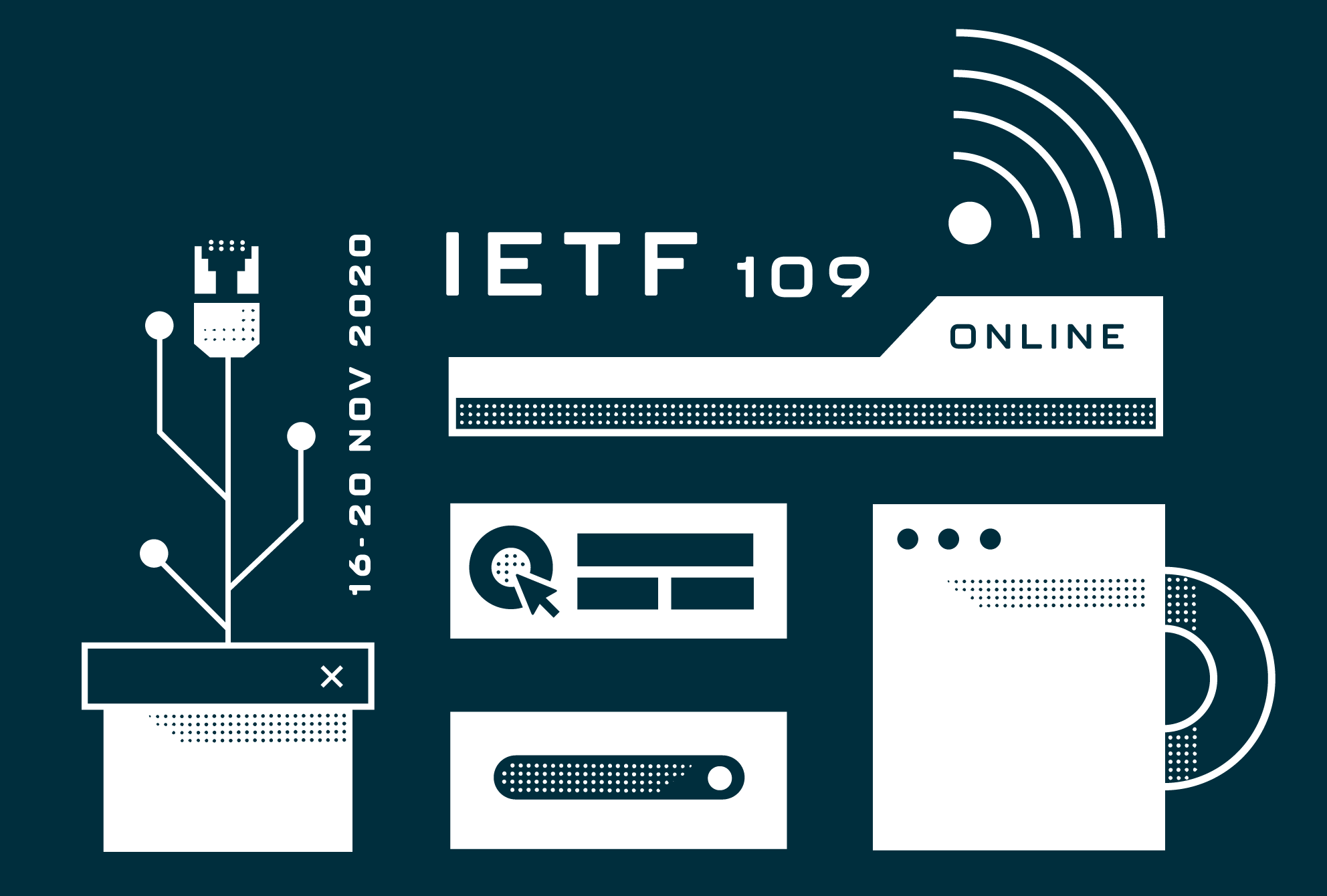Filter by topic and date
IETF 109 Highlights
- Alissa Cooper IETF Chair
1 Dec 2020
More than 1000 participants gathered for a lively and productive online meeting at IETF 109.

IETF 109 rounded out the first full year of online IETF meetings. As the pandemic drags on we are all missing the energy, connection, and camaraderie that come about naturally from seeing each other in person, but the IETF community has proven to be incredibly resilient. IETF 109 was our most interactive online meeting thus far, and our standards work continues to make good progress despite the challenges of 2020.
We had one Birds of a Feather (BOF) session on the agenda at IETF 109: MAC Address Device Identification for Network and Application Services (MADINAS). The goal of the session was to discuss issues related to service continuity in the presence of MAC address randomization. The session provided a nice overview of current MAC randomization schemes and use cases affected by randomization. The discussion brought to light how these use cases fall into different categories and also how some existing identifier systems, if they were more broadly adopted, might address some of the use cases. The next step for IETF work is not entirely clear, but I think those who attended felt it was a valuable discussion.
Several working groups with contentious topics on their agendas had productive meetings without significant tension. The Source Packet Routing in Networking (SPRING) working group heard a report from its design team working on Segment Identifier (SID) compression. There is some frustration with the scope, direction, and pace of the team’s work, but the chairs are looking forward to an engaged working group discussion once the design team delivers SID compression requirements to the WG for consideration. The Transport Area working group (TSVWG), is moving towards having the information it needs to progress the experimental Low Latency, Low Loss, Scalable Throughput (L4S) proposal designed to make some of the concepts behind Datacenter TCP more widely available. Further work to demonstrate how an L4S congestion controller can be safely deployed is still needed, and not all participants are satisfied with the L4S design, but the discussion appears to be coalescing.
In addition to working group discussions, the meeting week also featured a variety of interesting technical talks. During the Security Area open meeting (SAAG) there was an in-depth talk about requirements for building a public key infrastructure. The Internet Research Task Force (IRTF) open meeting hosted three talks by Applied Networking Research Prize (ANRP) winners. The topics of the talks were network topology for satellites, congestion control fairness, and tradeoffs between measurement transparency and anonymity. All the talks and sessions recordings are available on the IETF YouTube channel.
The engine of the IETF continues to drive work forward between meetings as well. Numerous working groups will seek to re-charter in the near future: Authentication and Authorization for Constrained Environments (ACE), Application-Layer Traffic Optimization (ALTO), CBOR Object Signing and Encryption (COSE), QUIC, and possibly Link State Vector Routing (LSVR) and Routing in Fat Trees (RIFT), which have completed their respective datacenter routing protocol specifications.
It is not easy to run a multi-week online meeting. Huge thanks to the Secretariat, MeetEcho, NOC, LLC, and Tools Team for all the work they put in before and during the meeting. Further feedback about the meeting technology is always welcome on the tools-discuss mailing list. Results of the meeting survey will be published soon.
Big thanks also to our meeting host Cisco for their support, and for the support of all of our sponsors. See you online again at IETF 110!